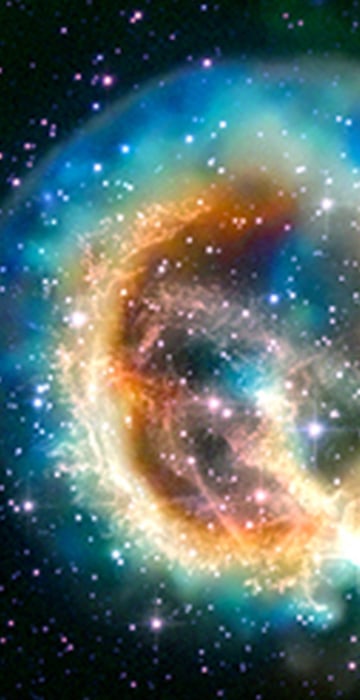
Science News
Month in Space: July 2009
See a stellar blast, a solar eclipse, liftoffs and other outer-space highlights from July.
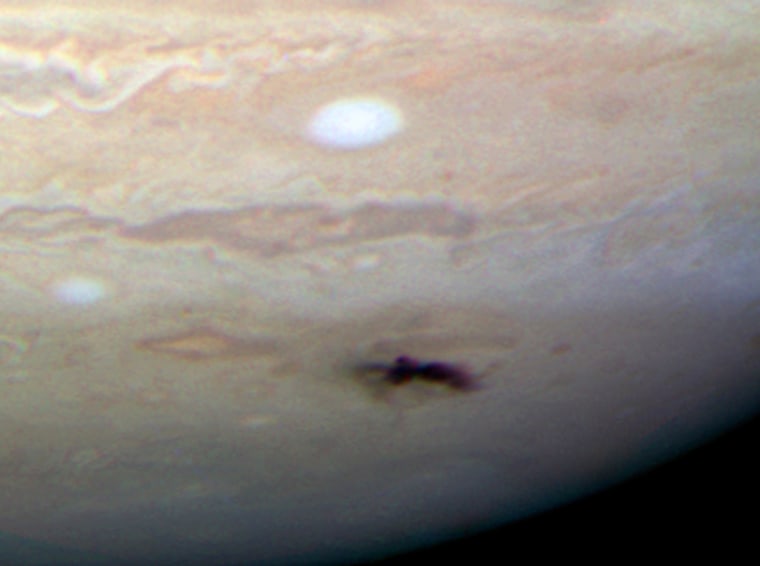
Great Black Spot
The newly upgraded Hubble Space Telescope took this picture of a "bruise" in Jupiter's clouds on July 23. Astronomers believe the dark spot was created when a comet slammed into the giant planet earlier in the month. This is the first picture produced by Hubble's Wide Field Camera 3, which was installed during a spacewalk in May.
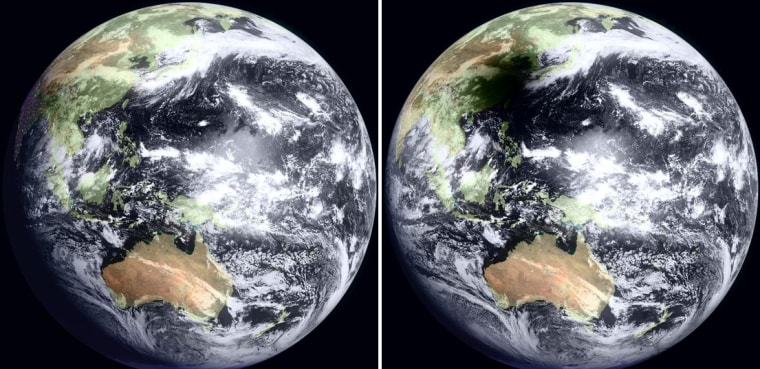
Space eclipse
The moon’s shadow engulfs a swath of southeastern China and the Pacific Ocean on the morning of July 22 during an unusually long total solar eclipse. These images from the Japanese geostationary satellite MTSAT show the view of Earth at 8:30 a.m. local time in Taiwan (left) and then an hour later (right) during the eclipse.

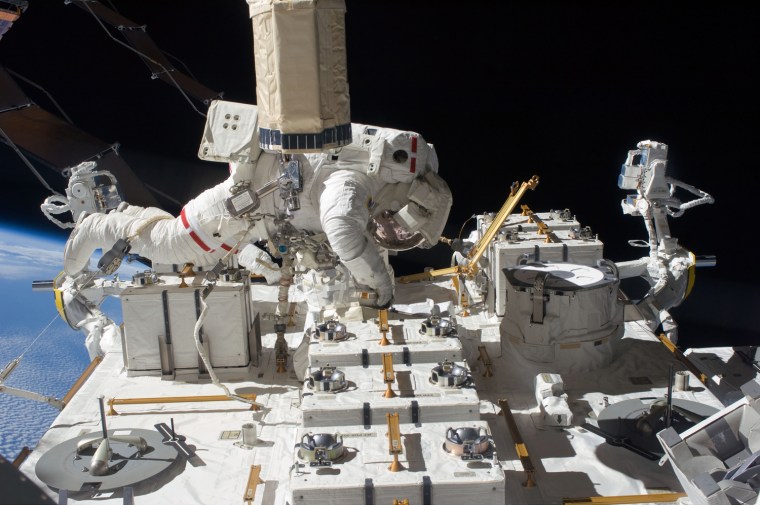
Orbital chores
Endeavour astronaut Tom Marshburn works on a platform attached to the international space station during a July 27 spacewalk. The shuttle Endeavour's crew installed the final piece of Japan's orbital lab during their 16-day mission. Thirteen astronauts and cosmonauts gathered together at the shuttle-station complex, setting a record for the biggest crowd in space.
![Informally known as the \"Soap Bubble Nebula\", this planetary nebula (officially known as PN G75.5.7) was discovered by amateur astronomer Dave Jurasevich on July 6th, 2008. It was noted and reported by Keith Quattrocchi and Mel Helm on July 17th, 2008. This image was obtained with the Kitt Peak Mayall 4-meter telescope on June 19th, 2009 in the H-alpha (orange) and [OIII] (blue) narrowband filters. In this image, north is to the left and east is down.
PN G75.5.7 is located in the constellation of Cygnus, not far from the Crescent Nebula (NGC 6888). It is embedded in a diffuse nebula which, in conjunction with its faintness, is the reason it was not discovered until recently. The spherical symmetry of the shell is remarkable, making it very similar to Abell 39.](https://media-cldnry.s-nbcnews.com/image/upload/t_fit-760w,f_auto,q_auto:best/MSNBC/Components/Slideshows/_production/ss-090728-misp/ss-090728-misp-05.jpg)
Soap bubble in space
Informally known as the "Soap Bubble Nebula," this planetary nebula in the constellation Cygnus (officially known as PN G75.5.7) was discovered by amateur astronomer Dave Jurasevich in 2008. This image was obtained with the Kitt Peak Mayall 4-meter telescope on June 19, 2009.
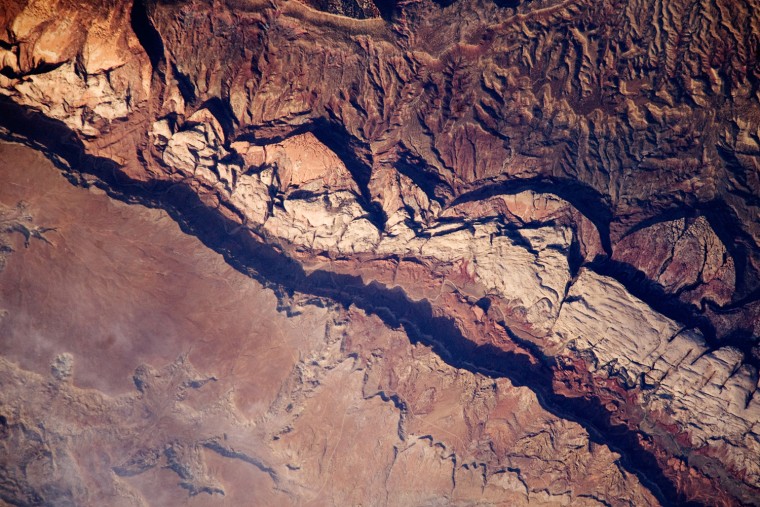
Faraway Fold
A picture taken from the international space station on June 14 shows part of a large feature on the Colorado Plateau known as the Waterpocket Fold. The Fold is a geologic structure consisting of layers of flat-lying sedimentary rock with a steep, one-sided bend, like a carpet runner draped over a stair step.
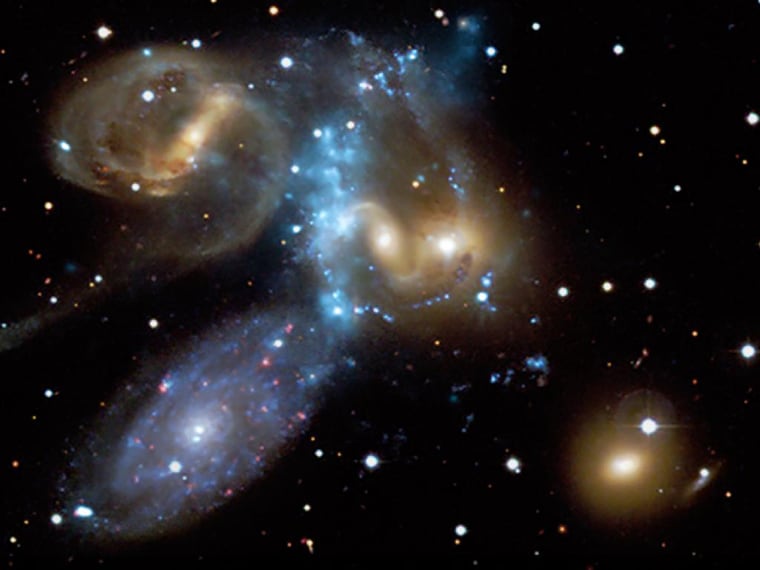
Beautiful Quintet
Stephan's Quintet is a compact group of galaxies discovered about 130 years ago and located about 280 million light-years from Earth. This photo, released July 9, combines imagery in visible light (from the Canada-France-Hawaii Telescope) and X-rays (from the Chandra X-Ray Observatory). The bluish ridge in the center of the image represents an X-ray-emitting shock wave that has been generated by the crash of galaxies.
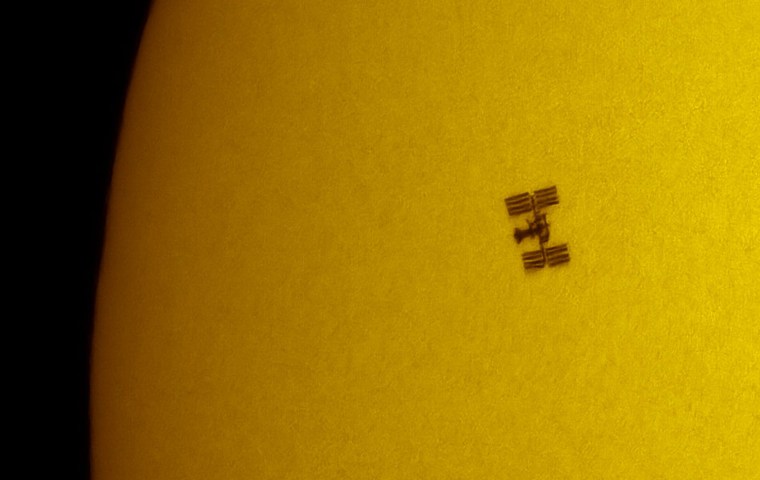
Station, shuttle ... and sun
Astrophotographer Thierry Legault captured this picture of the international space station and the docked space shuttle Endeavour crossing over the sun's disk on July 26, as seen from Orleans, France. The photograph was taken through Legault's Takahashi TOA-150 refractor telescope. More of Legault's images are posted at Astrophoto.fr.
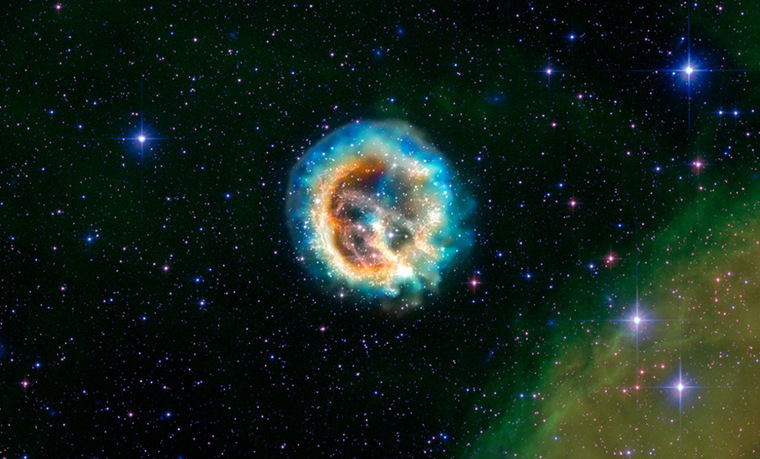
X-ray fireworks
This image of the debris of an exploded star - known as supernova remnant 1E 0102.2-7219, or "E0102" for short - features data from NASA's Chandra X-Ray Observatory. E0102 is located about 190,000 light-years away in the Small Magellanic Cloud, one of the nearest galaxies to the Milky Way. The image was released July 23 to mark the 10th anniversary of Chandra's launch.
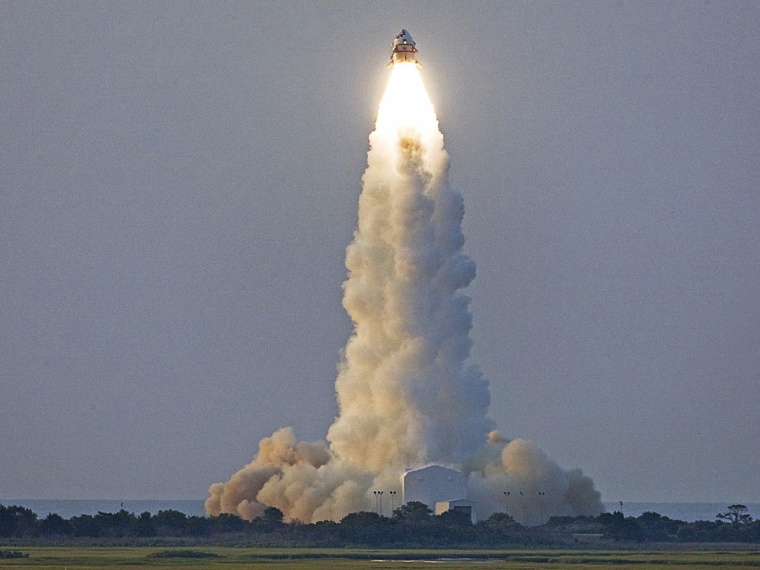
Up, up and away!
NASA's Max Launch Abort System rises on a pillar of flame and clouds on July 8 during a test launch at the space agency's Wallops Flight Facility in Virginia. MLAS is an alternative launch abort system that is under study as NASA considers ways to protect future astronauts in the event of a launch-pad emergency.
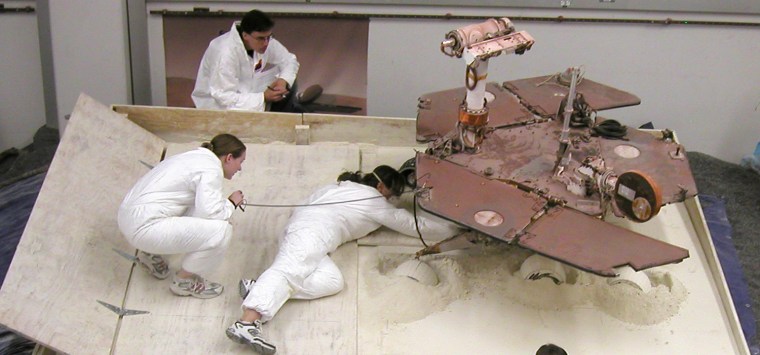
How to rescue a Mars rover
Rover team members Scott Maxwell, Pauline Hwang and Kim Lichtenberg prepare a test rover for a July 9 session aimed at figuring out the best way to free it from soft soil in a specially configured "dustbin" at NASA's Jet Propulsion Laboratory. The results of such tests will help engineers devise a strategy for freeing up NASA's Spirit rover, which has been stuck in a similar situation on Mars.
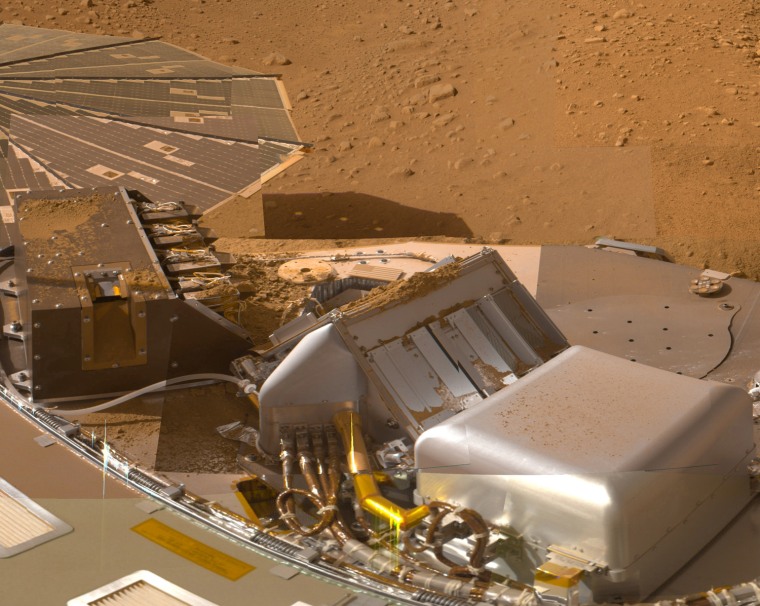
What Martian dirt looks like
This mosaic of images from the Surface Stereo Imager on NASA's Phoenix Mars Lander shows a portion of the spacecraft's deck after deliveries of Martian soil samples to instruments on the deck. The component images for this approximately true-color view were taken on various dates during Phoenix's five months of operations in the Martian Arctic. The picture was released July 2.
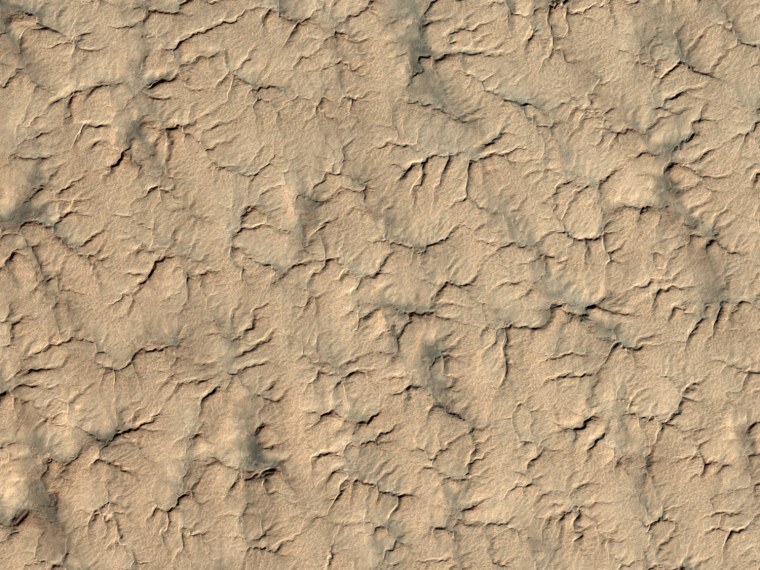
Can you spot the Mars lander?
This image of Mars' south polar region is part of a sequence of pictures that were taken by NASA's Mars Reconnaissance Orbiter to look for the Mars Polar Lander or its parachute. The lander was lost after entering the Martian atmosphere in December 1999. Debris from the lander may be covered by dust and ice, making identification difficult. The image was acquired June 3 and released July 8.
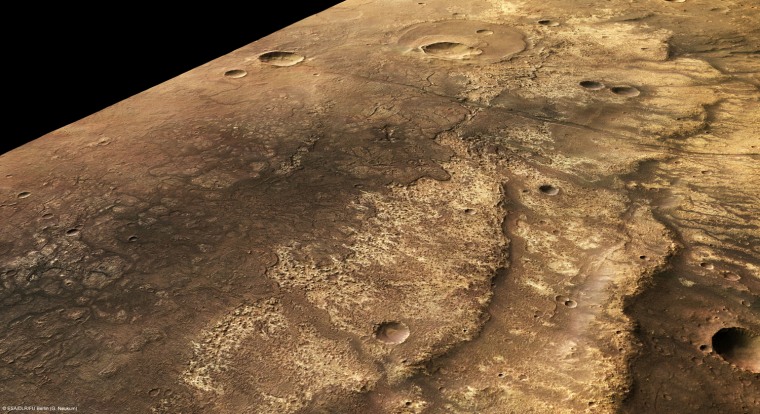
Mad about Mars
This picture from Europe's Mars Express orbiter, released July 24, puts one of the Red Planet's largest canyons in perspective. Ma'adim Vallis is marked with craters, lava flows and tectonic features. The perspective view was produced using data from the orbiter's High Resolution Stereo Camera.
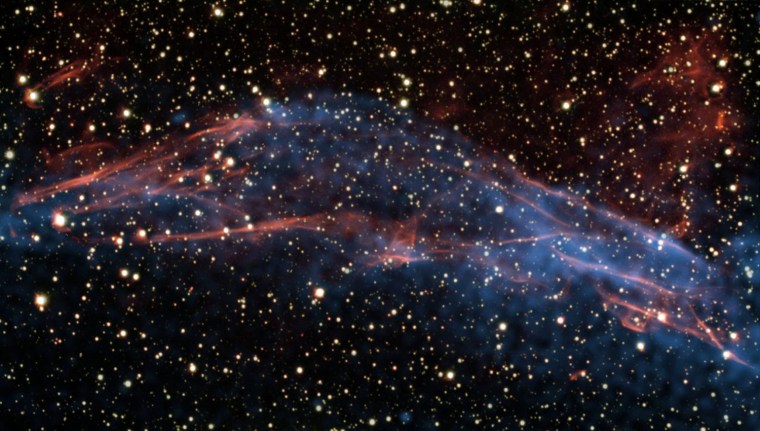
Cosmic accelerator
Cosmic rays from our Milky Way galaxy are accelerated efficiently in the remnants of an exploded star, as shown in this June 25 imagery from the European Southern Observatory's Very Large Telescope and NASA's Chandra X-ray Observatory. Researchers studied the color-coded emissions from the supernova remnant RCW 86, which is 8,200 light-years from Earth, to learn how such "super-accelerators" work. They found that the shock wave created by the stellar explosion moves at 1 to 3 percent of the speed of light.
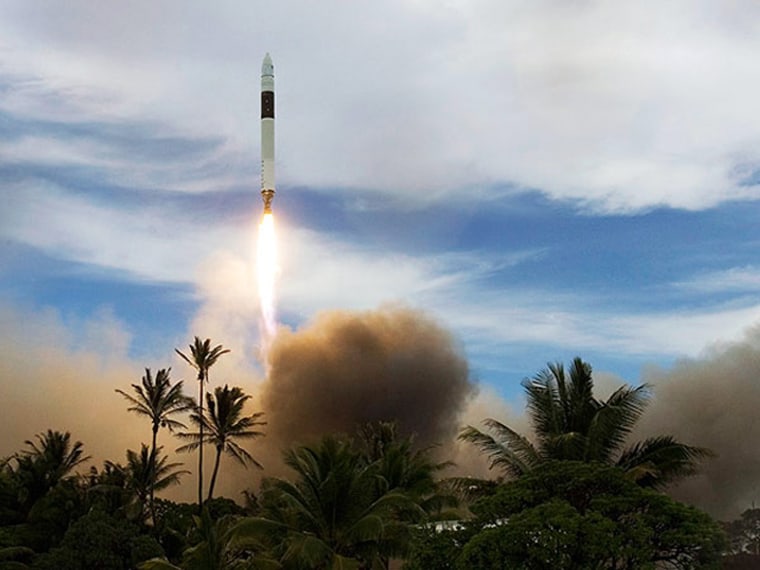
Rumble in the jungle
SpaceX's Falcon 1 rocket rises from its Pacific island launch pad on July 14, lofting Malaysia's RazakSAT satellite into space. The launch marked the first time California-based SpaceX successfully put a commercial payload into orbit. SpaceX was founded by dot-com millionaire Elon Musk to provide lower-cost access to space.